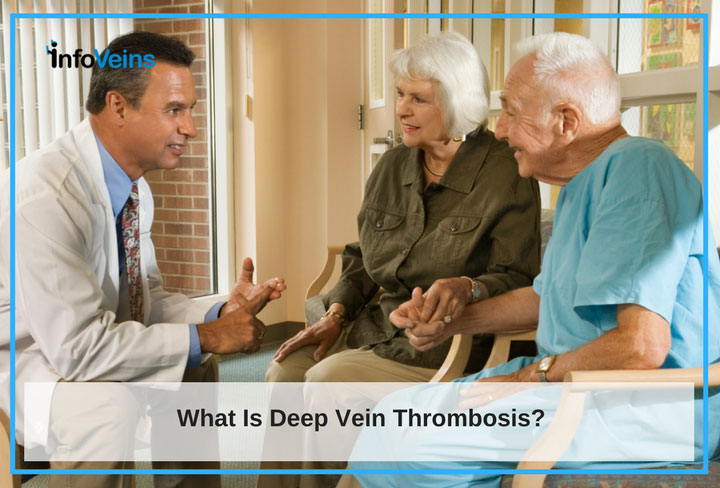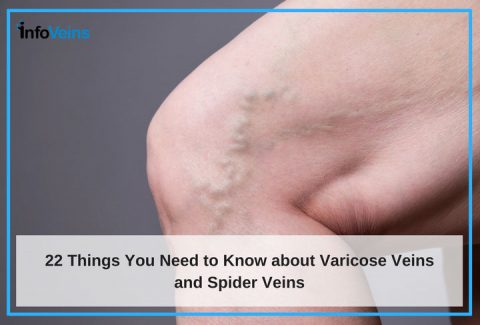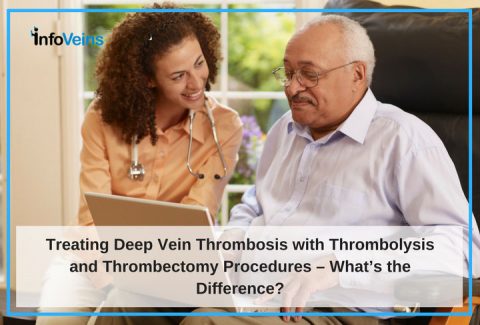
Deep vein thrombosis, or DVT, is when a clot forms in a vein deep in the body. This is a serious health problem. It’s important to know the danger signs of DVT, because being diagnosed quickly and receiving immediate treatment is key to having a better outcome.
Read on to learn more about what deep vein thrombosis is, what to look for, if you’re at risk, how to get diagnosed and how this condition is treated.
Blood clots can be normal. When we cut ourselves we want blood to clot so it stops the bleeding. But sometimes, blood clots form where they shouldn’t – this is the case when DVT develops.
Warning Signs of Deep Vein Thrombosis
Everyone should know the warning signs of DVT. Blood clots can form in any veins, but legs and arms are the most common. i You should seek immediate attention from your doctor if your leg or arm is:
- Swollen
- Painful or tender
- Warm
- Red in color i
Who is at risk of getting Deep Vein Thrombosis?
While anyone can get DVT, you may be more likely to develop the condition if you:
- Have a family history of blood clots
- Have undergone surgery
- Have been pregnant
- Are considered overweight or obese
- Take or have taken birth control pills or female hormone medications
- Have or had cancer
- Have used tobacco
- Have a history of sitting or lying for long periods of time, such as on long airplane flights or in a hospital bed
- Are older than 60
- Have had heart problems
- Have Crohn’s disease or other inflammatory bowel diseases
- Have a central venous catheter ii
Diagnosing Deep Vein Thrombosis
If your doctor is worried you have DVT, there are 2 tests used to diagnose this condition.
- Duplex ultrasound – This imaging test uses sound waves to visualize the inside of the blood vessels and look for blood clots.
- D-dimer – A D-dimer test looks for protein in the blood, which is usually elevated when there’s a blood clot. If it’s negative, this blood test can be helpful to rule out the likely presence of deep vein thrombosis.
Complications of Deep Vein Thrombosis
Pulmonary Embolism
The most dangerous complication of deep vein thrombosis is pulmonary embolism. This happens when part of the blood clot breaks off and travels to the lungs. If it’s large enough, it can block the flow of blood to the lungs and cause death. See a doctor immediately if you have any of these symptoms:
- Passing out or feeling dizzy
- Racing heart beat
- Shortness of breath that is sudden and out of the blue
- Chest pain that gets worse when taking a deep breath or coughing
- Coughing up blood ii
Special imaging tests are needed to help diagnose pulmonary embolism. The 2 most commonly used tests are:
- Computed tomographic (CT) pulmonary angiography – This CT scan is specific for looking for a blood clot in the lungs and is the test usually ordered by doctors.
- Ventilation-perfusion – This is also called a V/Q scan. It’s used to look at the parts of the lung that are getting oxygen and then comparing that to the parts of the lung that are getting blood. If there is a blood clot in one part of the lung, there would be oxygen flowing but no blood flow. This test is reserved for use only when the CT scan cannot be performed or could be harmful. iii
Post-thrombotic Syndrome
A less dangerous but common complication of deep vein thrombosis is post-thrombotic syndrome. Blood clots in the leg may cause pain, swelling and redness when they begin, but even with treatment of blood thinners, the blood clot can continue to damage the veins. This damage to the veins and valves can cause leg pain, swelling, varicose veins and even leg ulcers. Up to 70% of people with blood clots on blood thinners may have these symptoms up to 2 months after developing deep venous thrombosis. iv Removal of the clot by an experienced interventional radiologist can help relieve symptoms for some.
Treatment of Deep Vein Thrombosis
If you have a blood clot, your doctor will likely want you to be on medications that will thin your blood. These medications decrease your body’s natural clotting system and allow the body to slowly absorb the clot. This also prevents new clots from forming. Most of the time, an injectable blood thinner is used first and then you are transitioned to an oral form. You will likely stay on blood thinners for at least 3 months. ii
RELATED: Treating Deep Vein Thrombosis with Thrombolysis and Thrombectomy Procedures – What’s the Difference?
If you think you have a blood clot right now, see your doctor right away. If you’ve been diagnosed with a blood clot and are wondering what is deep vein thrombosis, but you have persistent pain even after being on a blood thinner, set up an appointment to see an interventional radiologist to see if there is anything else that can be done.
Sources:
i Centers for Disease Control and Prevention, Venous Thromboembolism (Blood Clots). https://www.cdc.gov/ncbddd/dvt/facts.html (reviewed 2/24/2016, accessed 12/16/2016)
ii Mayo Clinic, Deep venous thrombosis (DVT). http://www.mayoclinic.org/diseases-conditions/deep-vein-thrombosis/basics/definition/con-20031922?p=1 (reviewed 7/3/2014, accessed 12/16/2016)
iii Centers for Disease control and Prevention, Venous Thromboembolism (Blood Clots) – Diagnosis and Treatment. https://www.cdc.gov/ncbddd/dvt/diagnosis-treatment.html (reviewed 8/13/2015, accessed 12/16/2016)
iv Society of Interventional Radiology, Deep Vein Thrombosis Overview. http://www.sirweb.org/patients/deep-vein-thrombosis/ (accessed 12/16/2016)


